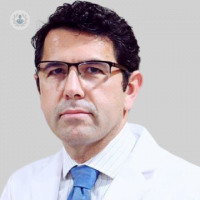Electrophysiological study: diagnosis and treatment of cardiac arrhythmias
Written by:The electrophysiological study (EEF) is a test that allows to study the alterations of the cardiac rhythm. EEF is composed of two parts: a first part that is the diagnosis (the mechanism that causes the arrhythmia is determined) and a second part that is the therapeutic part (in which the mechanism that sustains the arrhythmia is destroyed). The heart has electrical activity, there are "foci" that generate said electricity and connections that transmit. Arrhythmias are alterations in the electrical activity of the heart.
Diagnosis of arrhythmia
FES are performed in a cardiac catheterization laboratory. One or more catheters are inserted through the patient's groin and accessed through the femoral vein to the heart. Occasionally it may be necessary to prick through other vessels. These catheters are generally visualized by X-rays. During EEF, the catheters can record electrical activity in the different areas of the heart and thus determine what type of arrhythmia the patient has and where it originates. Once the problem is identified that generates the arrhythmia, during the EEF is the destruction of the same. It is what is called the therapeutic EEF and with this technique many of the existing arrhythmias can be cured.
Ablation of arrhythmia
The destruction of the mechanism that sustains the arrhythmia is called ablation. Different sources of energy can be used to ablate ("destroy"), the most frequent is radiofrequency (which destroys by heating) and secondly cryotherapy (destroys by freezing). The end of the ablation catheter rests on the area where the arrhythmia is generated and energy is applied to eliminate it.
Most of the therapeutic FES are performed under local anesthesia and with light sedation of the patient , allowing the patient to communicate with the staff of the ward. In some cases it may be necessary to use general anesthesia. The therapeutic EEF allows to cure most of the arrhythmias, originating in the different zones of the heart (atria and ventricles). Many of these arrhythmias significantly reduce the quality of life of the patient who suffers from it and some may even endanger their lives.
Definitive Treatment
Thanks to the therapeutic EEF, the patient can definitively get rid of his arrhythmia , thus avoiding hospitalizations and drugs (none is curative and can have important undesirable effects). The duration of the FES is approximately two hours, although in complex cases it can be ostensibly greater. The patient is usually discharged home within 24 hours, unless there is a complication. EEF should be performed by electrophysiologists who are cardiologists specialized in the management of arrhythmias, for which they have had to obtain a specific accreditation after a very demanding training period.



